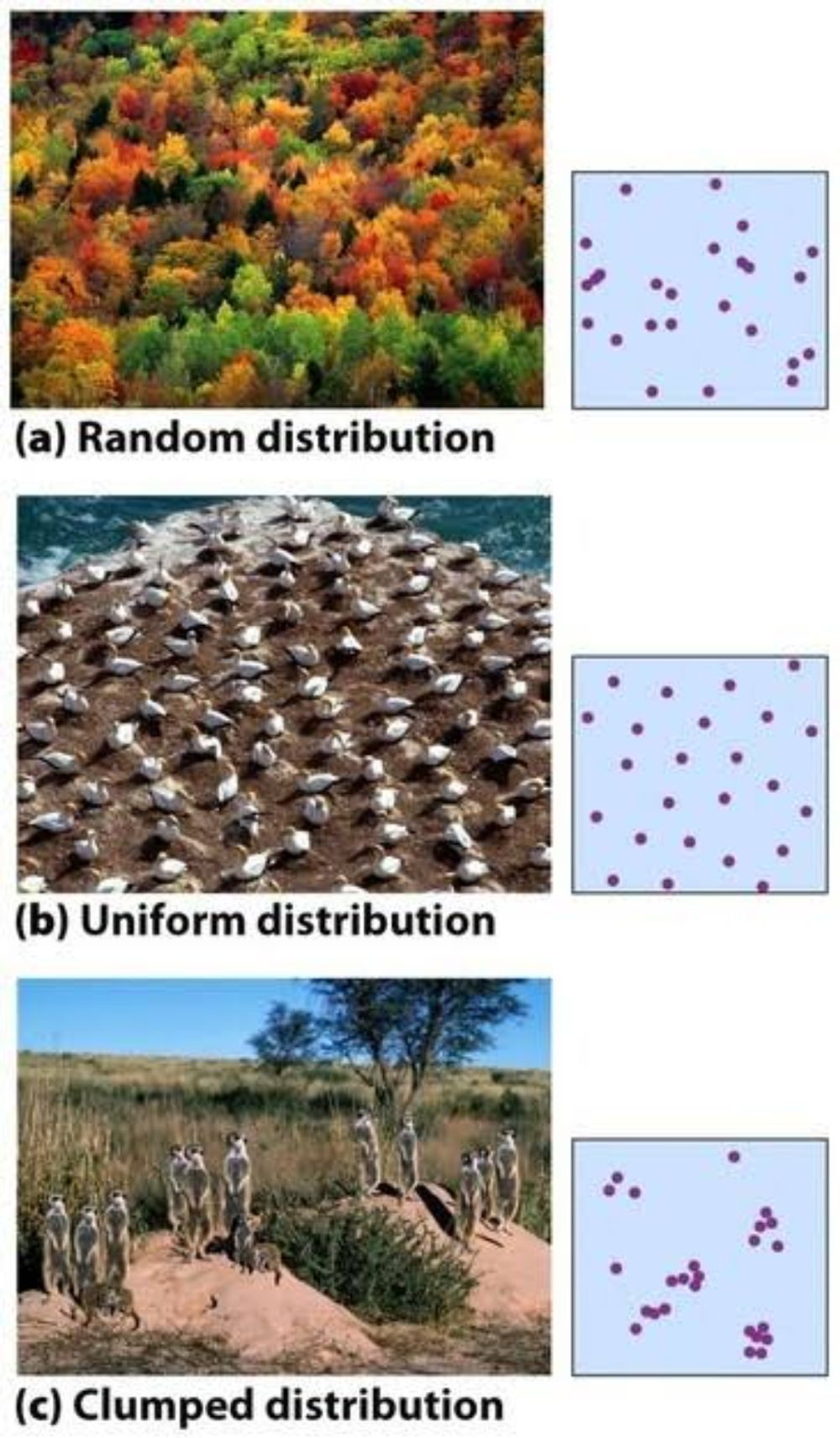

Population structure: It usually refers to all living organisms population size, density and dispersal. Ecologist determine the size and density of the population of the organisms of every geographical unit by using the Mark Recapture Method it is the method is used to estimate the impractical population size of all the living organisms that living in a unit.
By applying this method the organisms of a unit that can be distributed in three patterns: uniform, random and clumped patterns. Ecologist estimate that population which are spaced and apart and the organisms are spread out in a regular pattern. In this type of population the organisms are live in a equally spaced environment with a limited natural resources such as trees and shrubs grown in desert region and the territorial species like Penguins stands in a systematic way just one after another tend to have an uniform population.
 While on the other hand, in the random pattern of distribution the population of the individual are unpredictable it means that the individual living in a unlimited spacing without having any limited natural resources. For example: dandelion blows with wind dispersed seeds of plant shows in random pattern. While a clumped patterns is an unequal distribution of the population of living species For Example: Animals of Savannah forest such as elephants travel in groups.
While on the other hand, in the random pattern of distribution the population of the individual are unpredictable it means that the individual living in a unlimited spacing without having any limited natural resources. For example: dandelion blows with wind dispersed seeds of plant shows in random pattern. While a clumped patterns is an unequal distribution of the population of living species For Example: Animals of Savannah forest such as elephants travel in groups.
Due to the change of the greater genetic variability through natural selection in a physical habitat or environment large population of species have stability then that of biological species live in a smaller population of a smallest unit.
In a species distribution the population of species diversity has been divided into three dispersion- Population dispersion is usually refers to that pattern of living species which the species tend to live with each other. Meanwhile it is important to note that a dispersion of a species population usually determine to signify a specific group of living organisms of a large population that live in a particular region.
 Population dispersion is almost similar to the distribution patterns of uniform, random and clumped patterns while these dispersal movement is detected by the nature of living species of a physical habitat and available of resources which are required to substain their lives. To understand the pattern of uniform dispersion an example of organisms has been identified in a survey that ecologist determine living organisms are equally inhabited with immediate defence surrounding of trees and leaves grown in a neatly rows of the benches of the trees.
Population dispersion is almost similar to the distribution patterns of uniform, random and clumped patterns while these dispersal movement is detected by the nature of living species of a physical habitat and available of resources which are required to substain their lives. To understand the pattern of uniform dispersion an example of organisms has been identified in a survey that ecologist determine living organisms are equally inhabited with immediate defence surrounding of trees and leaves grown in a neatly rows of the benches of the trees.
In a random dispersion the organisms of a specific unit is not equal distributed or the organisms of a particular unit are not systematic arranged therefore some of the organisms may live together and some other are fall apart from each other and clumped dispersion occurs the living organisms of an unit are live in a particular group in a uneven distribution like that of swallowtail caterpillars tand to clumped in areas within their host plant.
Thanks for Reading








